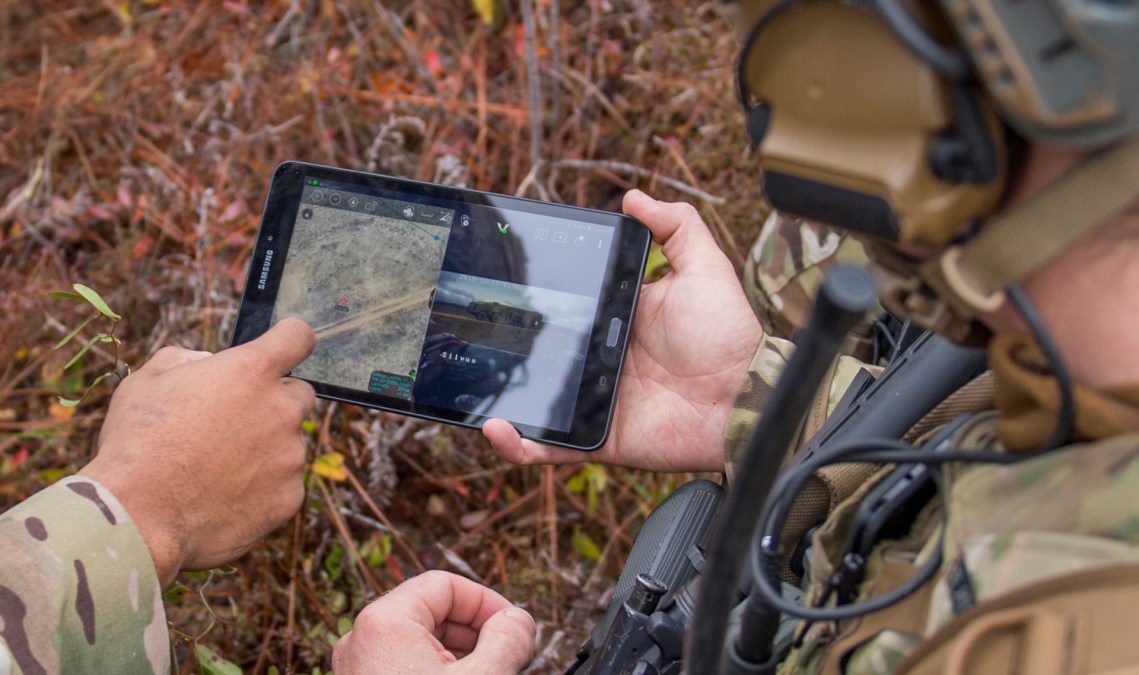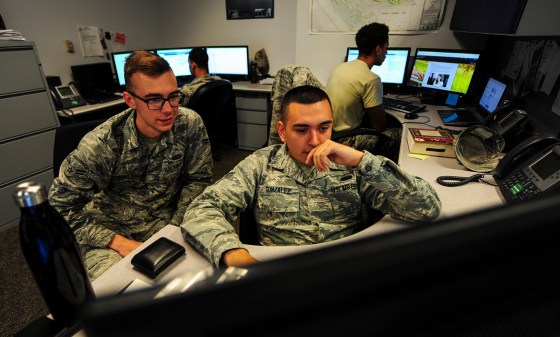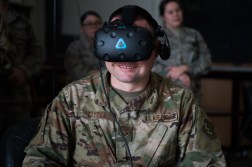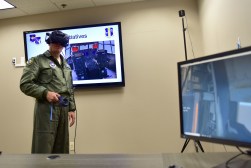Battlefield tech, but for teleworking: How the Air Force is adjusting in a pandemic

The Air Force says it is managing to keep its acquisition experts connected — even on classified programs — by adapting technology once designed for the battlefield.
For developing classified programs, Air Force acquisition teams will be able to stay connected through a platform called deviceONE originally meant for sensor-data transmission on the department’s Advanced Battlefield Management System (ABMS). The service has placed orders for 50 of the secret-level communications systems and hopes to distribute them to senior leaders so they can stay up-to-date on programs they oversee, Will Roper, the assistant secretary of the Air Force for Acquisition, Technology and Logistics, said Thursday.
The hope is to increase the order to 400 devices and eventually 4,000 once more money becomes available, Roper said. At first, the devices will go to key senior leaders working on developing classified projects so they can stay in the loop. Eventually, Roper hopes more teams of acquisition specialists and other project managers will be able to utilize deviceONE.
The platform has “amazing security protocols” that use zero-trust architecture to ensure that credentials are checked at every layer of the system, not just at an initial log in portal, Roper said. Beyond technical fixes, Roper added that the Air Force workforce has risen to the occasion and is performing better than before the coronavirus pandemic forced 93 percent of the acquisition workforce into their homes.
“Our workforce has really stepped up their game,” he said during a virtual press conference Thursday.
The shift to distributed work was enabled by the Air Force’s migration to the cloud and the use of enterprise IT services, like the new Commercial Virtual Remote (CVR) Environment. The transition was not seamless, with an early April Air Force procurement document stating that “it has been determined that current IT capabilities are insufficient to meet the needs of a predominantly remote workforce.” The document goes on to say it has resulted in “severe impacts” on “various missions sets.” Roper said that while there have been some bumps in the road, many programs remain on track and strong. The importance of IT is now being recognized, he added.
“IT will not be that side gig,” Roper said. “We will put real money into it because that money translates into efficiency.”
Other operations that have been moved online are so-called critical design reviews and work on the Air Force One modernization program. Senior Department of Defense leaders have also adjusted their workflows and utilize teleconferencing for meetings, like a recent telemeeting to discuss the nascent Space Force‘s new acquisition plan. Roper said the meeting was his preferred style of being “unstructured and free-formed,” a change from briefs with long slideshows.
Coronavirus lessons learned
The lessons being learned are already starting to stick, Roper said.
“People are bringing a certain swagger” to trying to solve new problems, he said.
The department is moving faster on sending out task orders and cutting through a backlog of contracts. The Air Force is even extending itself by using its AFVentures team as a go-to for the DOD’s outreach to small businesses and doing “tech reviews” for the Federal Emergency Management Agency, he said. Even ceremonies are being conducted virtually, like the change of leadership at Kessel Run being done in an online event.
“I don’t think we are going to go back,” Roper said.




